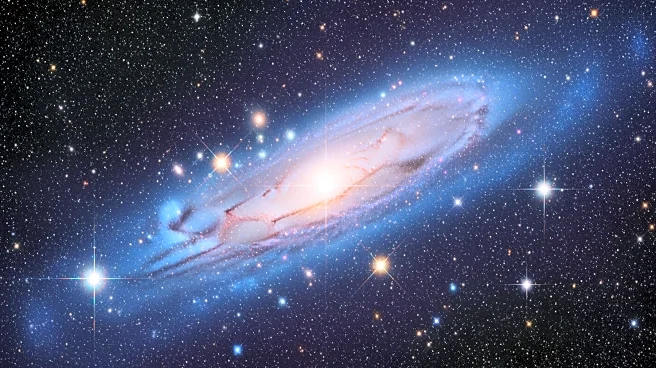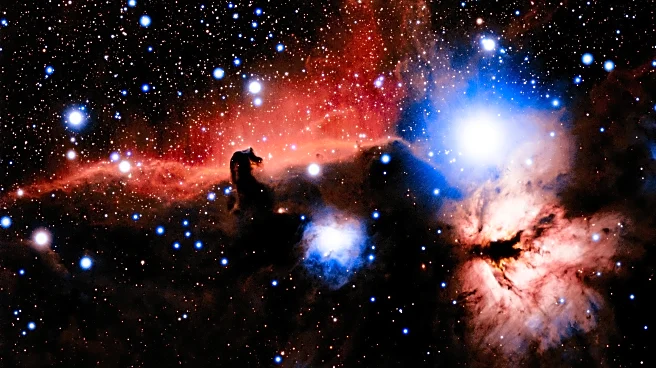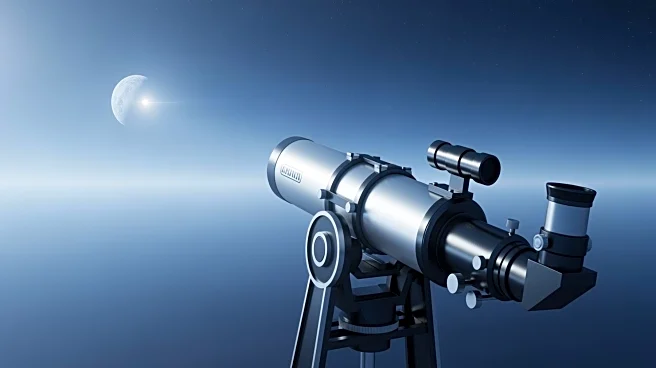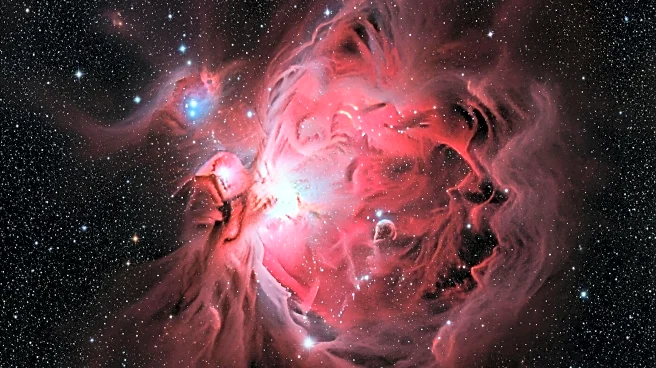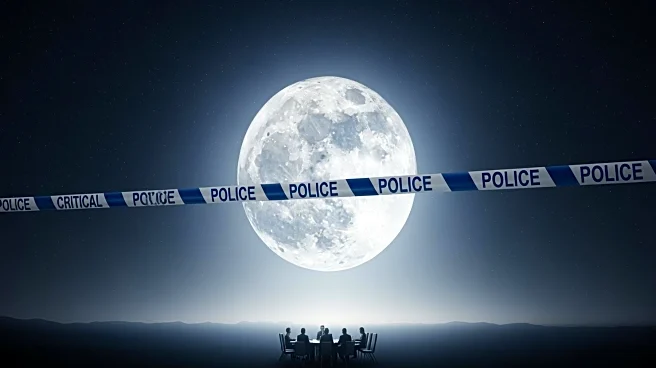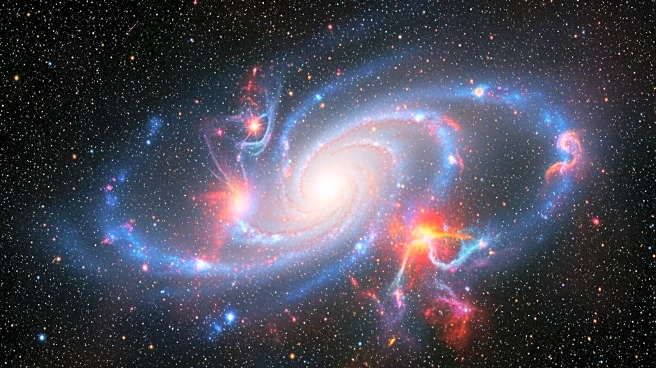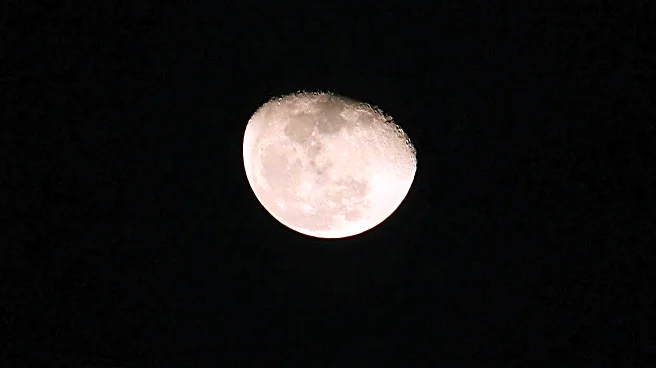What's Happening?
Astronomers have potentially identified the first generation of stars, known as Population III stars, in a distant galaxy called LAP1-B. These stars are believed to have formed from pristine hydrogen and
helium gas before heavier elements were distributed by supernovae. The discovery was made using data from the James Webb Space Telescope, which observed LAP1-B at a redshift of 6.6, indicating it existed about 800 million years after the big bang. The galaxy's light was magnified by a nearer galaxy cluster through gravitational lensing, allowing astronomers to spot it. The candidate galaxy has a stellar mass consistent with simulations of Population III star clusters, making it the most promising candidate yet.
Why It's Important?
The discovery of Population III stars is significant as it could provide insights into the early universe's chemistry and the formation of the first heavy elements. Understanding these stars helps scientists learn how the universe evolved from simple hydrogen and helium to the complex chemistry that supports life today. The identification of these stars could also refine models of early star formation and the distribution of elements in the universe. However, some skepticism remains due to the rarity of such stars and the need for further observations to confirm their existence.
What's Next?
Further observations and detailed simulations are required to confirm the presence of Population III stars in LAP1-B. Astronomers will continue to analyze data from the James Webb Space Telescope and other instruments to gather more evidence. If confirmed, this discovery could lead to a deeper understanding of the universe's early stages and the processes that led to the formation of galaxies and stars as we know them today.
